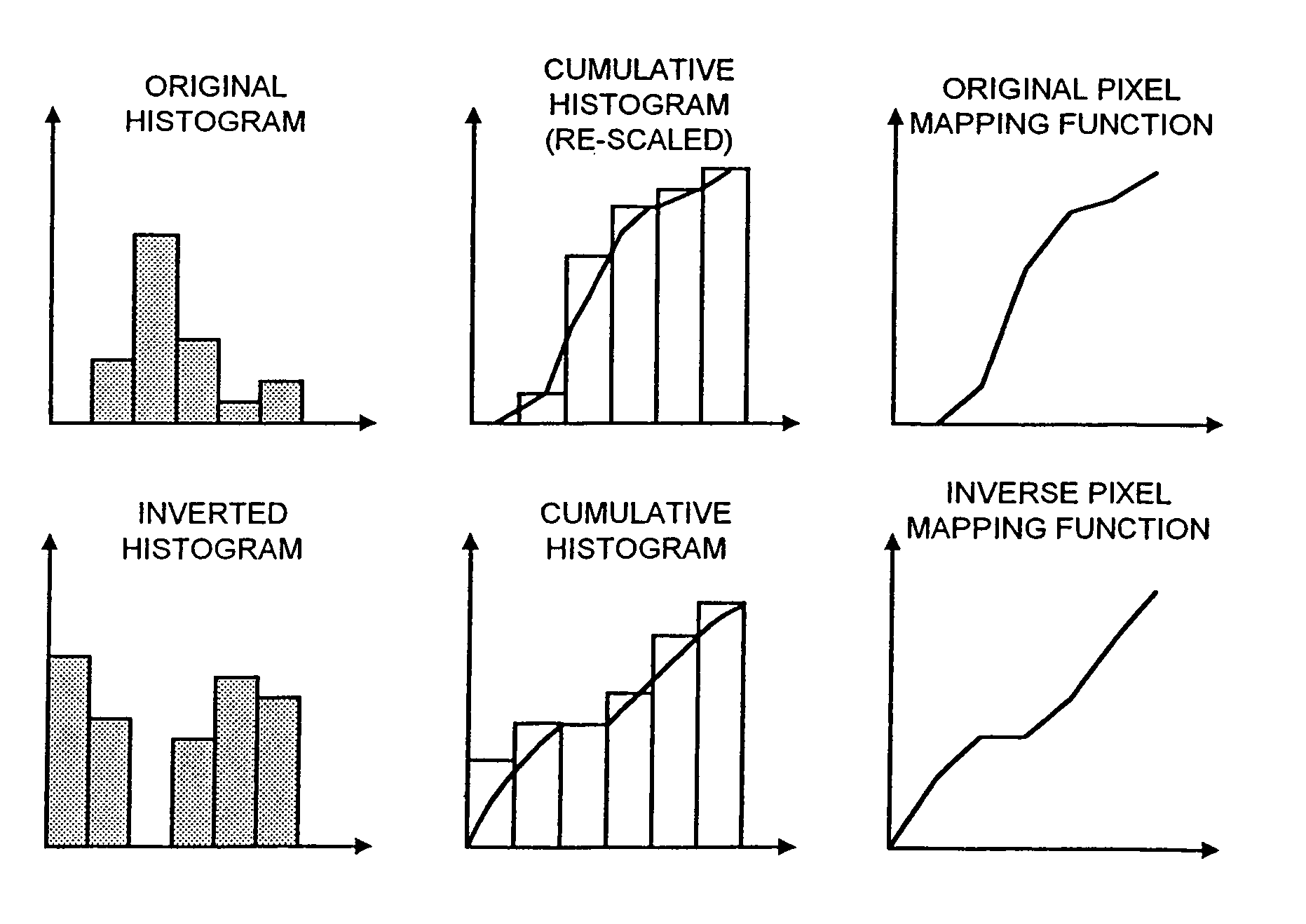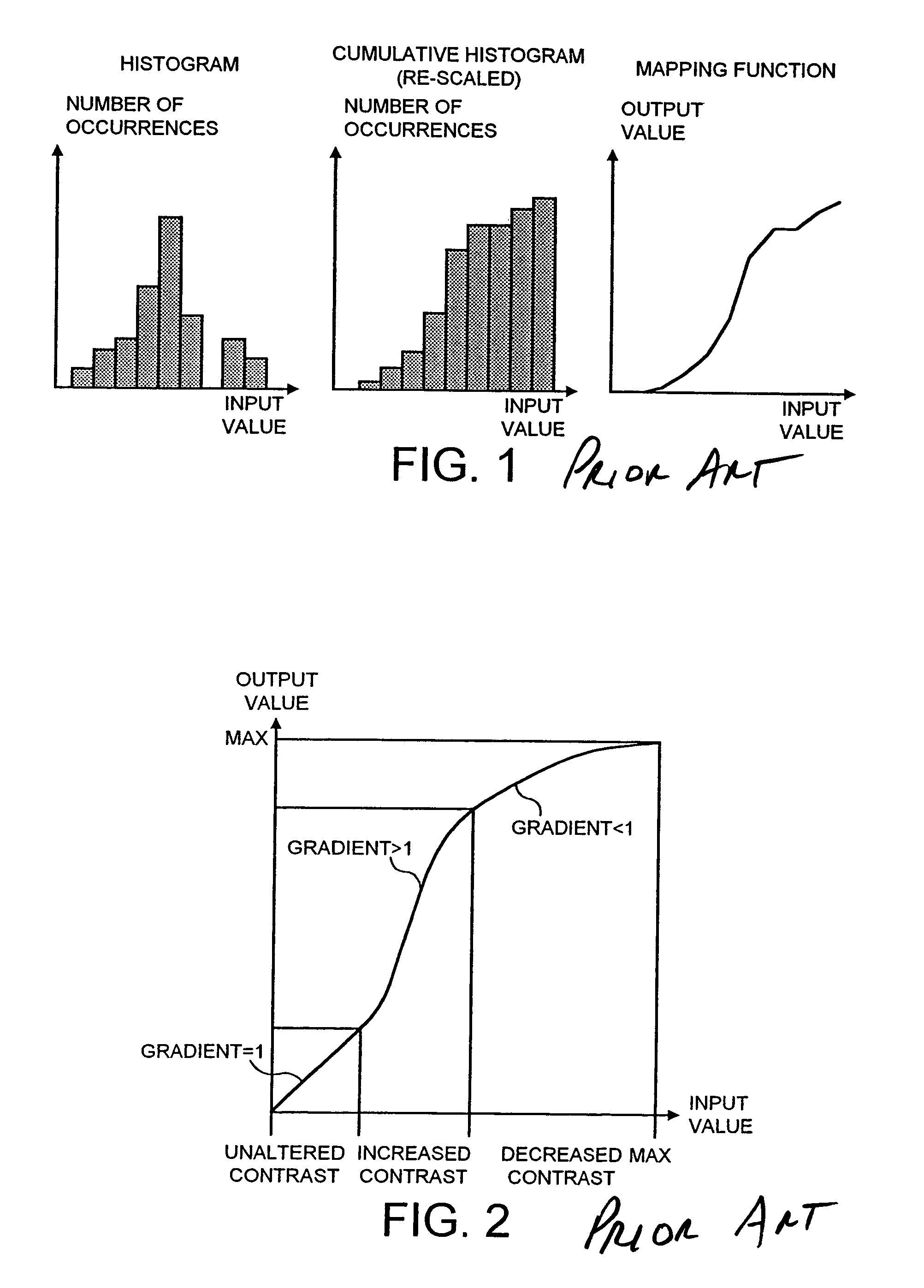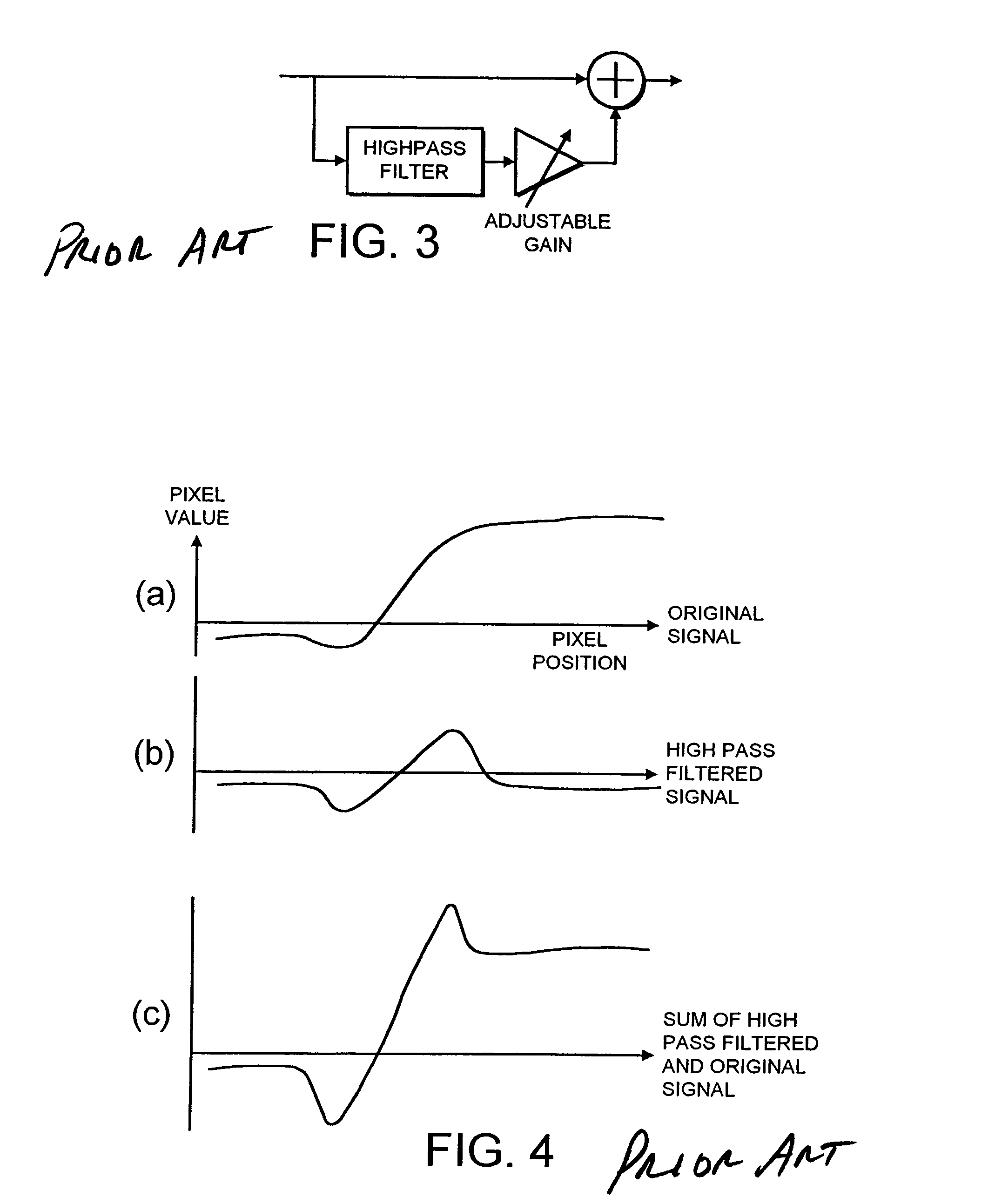Method and apparatus for enhancing a digital image by applying an inverse histogram-based pixel mapping function to pixels of the digital image
a digital image and pixel mapping technology, applied in image enhancement, instruments, computing, etc., can solve problems such as poor contrast and brightness, lack of sharpness, and prone to such degradation of mobile imaging products presently under development, and achieve the effect of enhancing contrast in certain pixel value ranges
- Summary
- Abstract
- Description
- Claims
- Application Information
AI Technical Summary
Benefits of technology
Problems solved by technology
Method used
Image
Examples
Embodiment Construction
[0064]The first aspect of the present invention resides in the provision of an inverse histogram-based pixel mapping technique for enhancing a digital image. As is well know, a digital image comprises an array of pixels. In the case of a monochrome image, each pixel has a pixel value within a certain range (e.g. 0–255), which denotes the pixel's luminance. In a color image, pixel values may be represented in a number of different ways. In a commonly used representation, referred to as the RGB color model, each pixel is described by three values, one corresponding to the value of a Red color component, another corresponding to the value of a Green color component and the third corresponding to the value of a Blue color component. Numerous other color models exist, in which alternative representations are used. In one such alternative model, know as the YUV color model, image pixels are represented by a luminance component and two chrominance or color difference components, each of wh...
PUM
 Login to View More
Login to View More Abstract
Description
Claims
Application Information
 Login to View More
Login to View More - R&D
- Intellectual Property
- Life Sciences
- Materials
- Tech Scout
- Unparalleled Data Quality
- Higher Quality Content
- 60% Fewer Hallucinations
Browse by: Latest US Patents, China's latest patents, Technical Efficacy Thesaurus, Application Domain, Technology Topic, Popular Technical Reports.
© 2025 PatSnap. All rights reserved.Legal|Privacy policy|Modern Slavery Act Transparency Statement|Sitemap|About US| Contact US: help@patsnap.com



